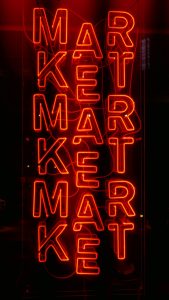Order blocks are an important concept in forex trading as they can help traders to identify potential reversal points in the market. They are also known as liquidity zones or supply and demand zones, and they represent areas of price where significant buying or selling activity has occurred. Drawing order blocks correctly can be a valuable skill for traders, as it can enhance their ability to identify key levels and make informed trading decisions. In this article, we will explain how to draw order blocks in forex.
Step 1: Identify Key Levels
The first step in drawing order blocks is to identify key levels on the chart where price has shown significant buying or selling activity. These levels can be identified using different technical indicators such as support and resistance, trend lines, moving averages, or Fibonacci retracements. Traders should look for levels where price has bounced off several times, indicating the presence of strong buying or selling pressure.
Step 2: Identify Liquidity Zones
Once key levels have been identified, traders should look for areas of consolidation or congestion around these levels. These areas are known as liquidity zones and represent the accumulation of orders from buyers or sellers. Liquidity zones are important because they can act as support or resistance levels and can influence price action in the future.
Step 3: Draw the Order Block
To draw the order block, traders need to identify the boundaries of the liquidity zone. This can be done by drawing a rectangle around the area of consolidation, taking into account the highs and lows of the price action. The rectangle should be drawn as close to the actual price action as possible to capture the true boundaries of the liquidity zone.
Once the rectangle has been drawn, traders can label it as an order block or supply and demand zone. The order block represents an area of supply where sellers have become aggressive and overwhelmed buyers, resulting in a bearish reversal. Conversely, the demand zone represents an area of demand where buyers have become aggressive and overwhelmed sellers, resulting in a bullish reversal.
Step 4: Validate the Order Block
To validate the order block, traders should look for confirmation from other technical indicators such as candlestick patterns, volume, or momentum oscillators. For example, a bearish reversal pattern such as a shooting star or a bearish engulfing candlestick can confirm the presence of a supply zone. Similarly, a bullish reversal pattern such as a hammer or a bullish engulfing candlestick can confirm the presence of a demand zone.
Traders should also pay attention to the volume and momentum around the order block. If the volume and momentum are high, it can indicate the presence of strong buying or selling pressure, increasing the likelihood of a successful reversal.
Conclusion
Drawing order blocks correctly is an essential skill for forex traders, as it can help them to identify potential reversal points in the market. By identifying key levels and liquidity zones, traders can draw order blocks and label them as supply and demand zones. Validating the order block with other technical indicators such as candlestick patterns, volume, and momentum can increase the probability of a successful reversal. Traders should practice drawing order blocks on different timeframes and currency pairs to gain a better understanding of this concept and its applications in forex trading.






